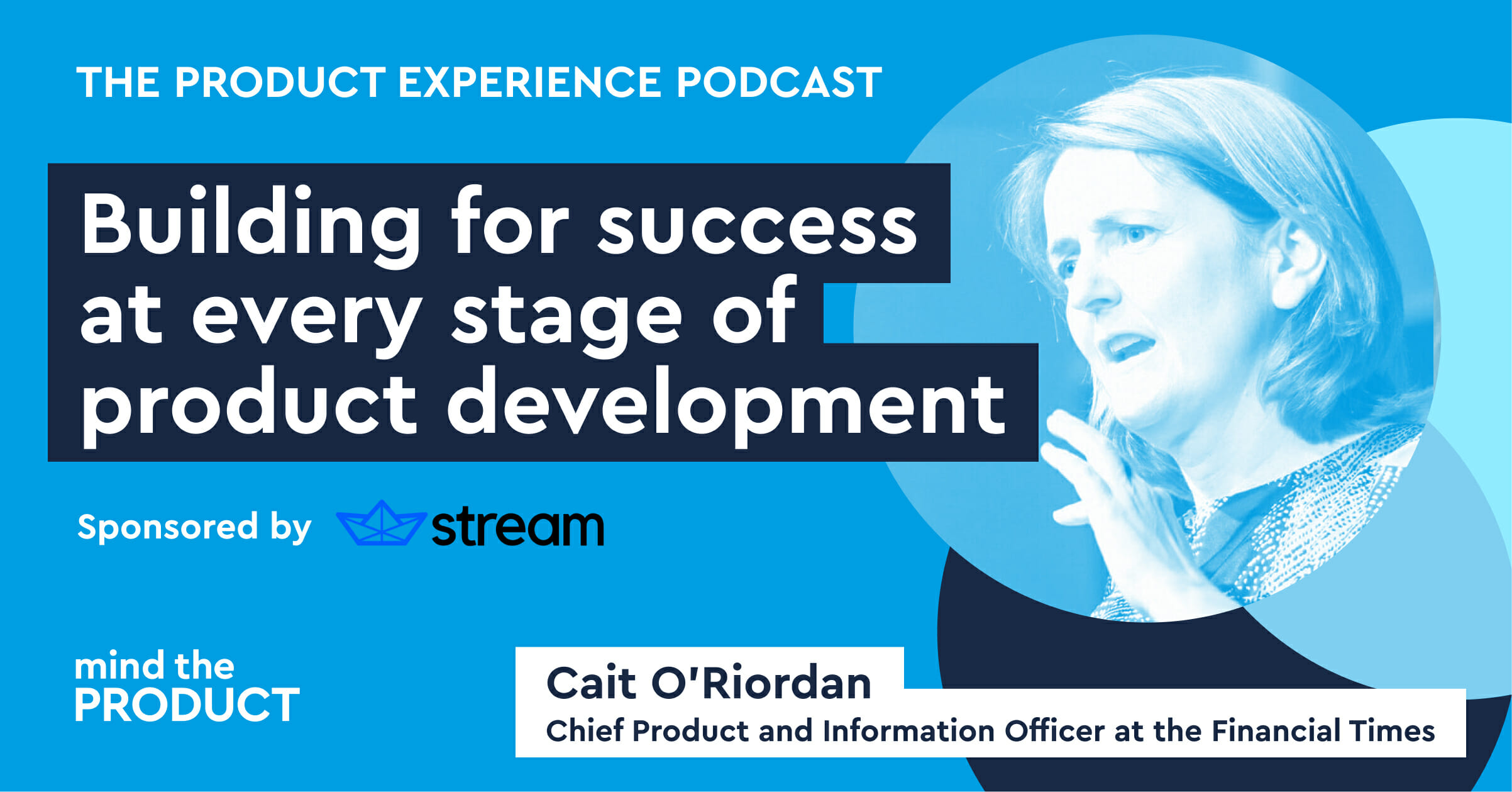If you’ve ever wondered why managing products for large enterprises feels like playing 3D chess while your friends in consumer tech are playing checkers, you’re not alone. Enterprise product management is a different beast with its own challenges, strategies, and rewards.
But what exactly is enterprise product management? At its core, it’s the art and science of developing and maintaining software products that cater to the complex needs of large organizations. These differ from your run-of-the-mill apps that individuals can download and use in minutes. We’re talking about sophisticated systems that often form the backbone of entire companies’ operations.
As Rich Mironov, a veteran product management consultant, puts it, Enterprise product managers don’t just manage products; they manage relationships, expectations, and entire ecosystems. This encapsulates a key difference between enterprise and consumer product management. While consumer product managers might obsess over user acquisition and engagement metrics, enterprise PMs are often more concerned with long-term customer value, complex stakeholder management, and ensuring their product can scale across an entire organization.
The stakes are higher, the sales cycles are longer, and the impact of decisions can be far-reaching. A misstep in consumer product management might mean a dip in daily active users. In enterprise software, it could mean millions in lost revenue or a damaged relationship with a critical account.
In this deep dive, we’ll explore the nuances, challenges, and strategies that define success in the world of enterprise product management. Let’s dive in…
If consumer software is a speedboat, enterprise software is an oil tanker. It’s bigger, more complex, and requires an entirely different approach to navigation. In the enterprise world, the days of users swiping a credit card and getting instant access are gone. Blair Reeves and Benjamin Gaines, in their book Building Products for the Enterprise, lay out a typical enterprise sales process that looks more like a marathon than a sprint:
This process can stretch from 6 to 18 months, sometimes even longer. During this time, you’re not just dealing with a single decision-maker. You’re navigating a complex web of stakeholders, each with their own priorities and concerns.
This complexity requires product managers to wear multiple hats. You need to be part strategist, part diplomat, and part translator, articulating your product’s value in terms that resonate with each stakeholder group. It’s a delicate balancing act that requires both depth of product knowledge and breadth of business acumen.
Long-term Relationships vs. Transactional Sales
Enterprise software isn’t about one-off transactions; it’s about building lasting relationships. As Mironov puts it, “In enterprise, you’re not just selling a product, you’re selling a long-term partnership.”
This shift in mindset has profound implications for how you build and manage your product. You’re not optimizing for quick user acquisition or viral growth, metrics that often drive consumer product development. Instead, you’re focused on delivering deep, sustained value that keeps customers renewing year after year.
Pete Koomen, co-founder of Optimizely, learned this lesson as his company transitioned from a self-service tool to an enterprise platform. Koomen noted that selling to enterprises requires a much deeper understanding of organizational structures, workflows, and long-term business objectives than when his company was previously selling to smaller startup companies. It takes a much longer focus, meaning enterprise product managers need to think beyond the initial sale. You’re not just building features; you’re creating systems that become integral to your customers’ operations. This requires a deep understanding of your customers’ businesses, industry trends, and long-term strategic goals.
When Koomen and his team at Optimizely were refining their understanding of their target customer, they came to a crucial realization: “If you’re building a product for an individual, your job is to help them solve a problem. But if you’re building for an organization, your job is to help them create a system for solving problems.”
This encapsulates the scale at which enterprise product managers need to think. Your decisions affect not just individual users but entire organizations. A new feature might require a company to retrain thousands of employees or a change in your data model might force a customer to restructure their entire workflow.
The stakes are incredibly high. As Reeves and Gaines point out, in enterprise software, it’s not just annoying when something goes down – a single misstep could cost your customers millions in lost productivity or missed opportunities.
But the flip side is that the impact can be enormous when you get it right. Your product could help a Fortune 500 company save millions, enable a government agency to serve citizens more effectively or empower a non-profit to expand its reach dramatically. The scale of potential impact in enterprise software makes it both challenging and incredibly rewarding.
This landscape demands that product managers think bigger and plan for the long term. You need to balance the immediate needs of individual users with the strategic objectives of entire organizations. It requires a unique blend of vision and pragmatism, big-picture thinking, and attention to detail.
With enterprise software, your customer isn’t just a person – it’s an entire ecosystem. Understanding this ecosystem is crucial to your success as a product manager. You start by solving problems for individual users, but soon, you’re addressing the needs of entire teams and, eventually, whole organizations. This shift requires a fundamental change in how you think about your customers. It’s no longer just about user personas like “Mary the Marketer” or “Dave the Developer.” Now, you need to understand the intricate dynamics of cross-functional teams and the strategic priorities of C-suite executives.
This evolution demands that you broaden your perspective. You’re not just building features; you’re crafting solutions that need to fit into complex organizational structures and workflows. As your customer base grows, not all accounts are created equal. This is where the concept of strategic accounts comes into play. Koomen describes how Optimizely took a list of about 20 customers who viewed experimentation as a critical business process and decided they would be strategic customers. Identifying and focusing on strategic accounts is crucial in enterprise product management. These accounts provide significant revenue and serve as partners in your product development journey. They offer deep insights into industry trends, complex use cases, and potential future directions for your product.
Rich Mironov emphasizes the importance of this segmentation. In his talk at INDUSTRY, he explained that enterprise product managers need to understand the different tiers of their customers – from the high-touch, strategic accounts to the broader base of customers. Each tier may have different needs and expectations.
But segmentation goes beyond just account size. You might segment based on industry verticals, use cases, or technological maturity. The key is to find segmentation criteria that allow you to group customers with similar needs and challenges, enabling you to develop targeted strategies for each group.
Building Deep Customer Empathy at Scale
In consumer products, building user empathy often involves techniques like usability testing or analyzing large sets of behavioral data. While these methods are still valuable in enterprise software, they are insufficient. An added layer of customer research is necessary, which involves:
Reeves and Gaines emphasize the importance of this deep understanding: “Only with full visibility of the customer can marketing craft stories and narratives around our product that connect with customers and users alike.”
Building this level of customer empathy at scale is challenging, but it’s essential for success in enterprise product management. It allows you to anticipate customer needs, align your product roadmap with their strategic objectives, and ultimately create products that become indispensable to their operations.
Remember, in enterprise software, you’re not just solving for user needs – you’re solving for business outcomes. The better you understand your customers’ businesses, the more effectively you can drive those outcomes through your product.
In enterprise software, the squeaky wheel often gets the grease – but that’s not always the best approach for your product’s long-term success. In his talk at INDUSTRY, Mironov painted a vivid picture of this challenge by noting how enterprise sales teams have a knack for pushing product teams for specific feature requests from 1 or 2 enterprise customers. This tension between customer-specific requests and broader market needs is at the heart of enterprise product strategy. On one hand, your largest customers often have the loudest voices and the deepest pockets. On the other hand, building one-off features for specific customers can lead to a fragmented product that’s difficult to maintain and scale.
So, how do you strike the right balance? Mironov suggests a pragmatic approach. He suggests having an allocation for special requests that you may be unable to avoid. But more than that, be sure to develop a great relationship with the Head of Sales, specifically, so you can work together when this issue arises.
You can’t say yes to every request. Instead, developing a structured way to evaluate and potentially accommodate strategic customer needs is important without derailing your overall product direction. Some strategies to consider:
In the enterprise world, your roadmap isn’t just a product planning tool – it’s a key part of your sales and customer retention strategy. As Blair Reeves and Benjamin Gaines point out, “In enterprise software, prospects are often buying into the vision as much as they are into the current offering.”
This means your roadmap needs to strike a delicate balance between being visionary enough to excite prospects and concrete enough to guide development. But be warned – the minute you share that roadmap with your sales team – you should expect that your enterprise customers will soon find that roadmap, too.
Given this reality, how do you approach roadmapping in enterprise contexts? Here are some key principles:
In enterprise software, no product is an island. Your success often depends on how well your product plays with others in the corporate IT ecosystem. Integration capabilities aren’t just nice-to-have features – they’re often make-or-break factors in enterprise deals. Here’s how to approach this:
Remember, your product strategy isn’t just about your product—it’s about your product’s place in your customers’ broader technology landscape.
In enterprise product management – the tension between products and other groups can be a normal part of the process. Tension between the product and sales teams can be especially high at times. Sales are focused on closing the next big deal, while product is trying to build a scalable solution for the entire market. So, how do you bridge this gap?
If sales are constantly pushing for the next big feature, engineering is often pulling in the opposite direction, advocating for architectural improvements and paying down technical debt. Your role is to find the sweet spot between these competing needs.
Here’s how to navigate this challenge:
Aligning with Marketing: Messaging Complex Value Propositions
In enterprise software, your product isn’t just a set of features – it’s a solution to complex business problems. Translating that value proposition into compelling marketing messages is a crucial collaboration between product and marketing.
Here’s how to foster effective product-marketing collaboration:
Remember, as Reeves and Gaines point out, “Only with full visibility of the customer can marketing craft stories and narratives around our product that connect with customers and users alike.”
Effective cross-functional collaboration in enterprise product management is more than just attending meetings or sharing documents. It’s about truly understanding the perspectives and priorities of each function and finding ways to align them with your product vision. It’s challenging work, but it separates good products from great ones when done well.
Launching an enterprise product isn’t just about throwing a big party and sending out a press release (though those can be fun). It’s a carefully orchestrated process that often starts long before the product is ready.
As Pete Koomen from Optimizely learned, “In the enterprise space, if you’re the first your customers are hearing about a new product, it is only when it becomes generally available you’ve already lost valuable months of sales runway.”
Some considerations to make during the launch of an enterprise product include:
Remember, as Blair Reeves and Benjamin Gaines point out, Enterprise SaaS sales cycles are routinely between 6 and 12 months. Your launch strategy needs to account for this extended timeline.
Once your product is in the market, the real work begins. Enterprise customers expect continuous improvement, but they also need stability. Balancing these competing needs is a key challenge. Considerations to make during this phase include:
All good things must end, and products are no exception. In the enterprise world, ending support for a product or migrating customers to a new version is a delicate process that requires careful planning and execution. End-of-life considerations to make include:
Remember, as Reeves and Gaines note, a good end-of-life process for your product leaves customers feeling supported by a well-organized business partner they are likely to work with again. Your customers realize, too, that all products likely need to come to an end at some point. But how you support them in that process makes a significant difference in whether they’ll continue to work with you on your modern products.
Your organizational structure can differ between a well-oiled machine and a chaotic mess. Here’s a breakdown of critical roles you might find in a mature enterprise product organization:
As your enterprise product grows, so too must your product organization. Considerations to make as you scale include:
Leadership in enterprise product management requires a unique skill set. You’re not just building products; you’re navigating complex organizational dynamics within your company and your customers’ companies.
There are several considerations to make as you develop leaders within your enterprise product management organization:
Building a strong organizational structure for enterprise product management is about more than just drawing boxes on an organizational chart. It’s about creating an environment where product managers can effectively navigate the complexities of enterprise software, drive value for customers, and grow into strong leaders.
Enterprise product management is fraught with unique challenges that distinguish it sharply from consumer product management – as noted throughout this essay. One of the primary challenges in enterprise product management is managing a vast array of stakeholders. Unlike consumer products, which typically have a straightforward user base, enterprise products are used by diverse organizational groups. Each group—from end-users to C-suite executives—has its own needs, expectations, and success criteria. This complexity requires enterprise product managers to be adept at stakeholder management, ensuring that the product meets the varied demands while aligning with the overarching business objectives. Balancing these interests often involves significant diplomacy and communication skills.
Another significant challenge is the lengthy sales cycle, which can last six months to over a year. This extended duration is due to the need for detailed evaluations, numerous sales calls, demonstrations, and negotiations, culminating in a lengthy implementation phase. Product managers must navigate this prolonged process, providing continuous support to sales teams, tailoring product presentations to different stakeholders, and ensuring the product remains attractive and relevant throughout the sales cycle. The long sales process can strain resources and require a persistent and strategic approach to maintain momentum and interest.
Integration and customization requirements add another layer of complexity. Enterprise products rarely operate in isolation and must integrate seamlessly with other systems within the organization’s IT ecosystem. This necessitates robust APIs, extensive customization options, and, often, bespoke solutions for key clients. Managing these integrations and customizations is challenging, as product managers must prioritize flexibility and extensibility in their product design while ensuring that these custom solutions do not detract from the overall product vision or create technical debt.
Operating in highly regulated finance, healthcare, and government industries brings additional constraints. Products developed for these sectors must adhere to strict regulatory requirements and compliance standards. Ensuring that the product meets these standards adds complexity to the development process. Product managers must stay abreast of relevant regulations, incorporate compliance considerations into the product design, and work closely with legal and compliance teams to mitigate risks, often resulting in longer development cycles and higher costs.
Managing technical debt and scalability is another significant challenge. Enterprise products must be scalable and robust enough to handle the demands of large organizations, requiring a substantial investment in infrastructure and architecture. Balancing the need for new features with the imperative to manage technical debt and ensure scalability can be difficult. Product managers must make strategic decisions about when to prioritize technical improvements over feature development, often negotiating with both engineering teams focused on maintaining the technical health of the product and sales teams pushing for new features to close deals.
Enterprise products also require extensive support and training. Given their complexity, users need comprehensive training to utilize the product effectively, and organizations often need ongoing support to address issues and optimize their use of the product. Product managers must work closely with customer success teams to develop robust training programs and support structures, including everything from detailed documentation and training sessions to dedicated support teams and personalized onboarding processes.
Balancing customization with the product vision presents yet another challenge. Enterprise clients often request specific features tailored to their unique needs, which can lead to a fragmented product if not managed carefully. Product managers must balance these customization requests with the broader product vision and strategy. This involves setting clear boundaries on what can be customized and ensuring that core product development remains aligned with overall market needs. Strategic decisions about feature prioritization and resource allocation are essential to maintaining a coherent and scalable product.
Navigating these challenges requires a combination of strategic foresight, strong stakeholder management, technical acumen, and the ability to balance competing demands. Enterprise product managers must be adept at managing complexity and ensuring that their products meet the needs of diverse user groups and align with the long-term strategic goals of both their company and their clients.
Enterprise product management is a unique beast, demanding a blend of strategic foresight, robust stakeholder management, technical acumen, and the ability to juggle competing demands. Unlike consumer products, enterprise solutions require navigating lengthy sales cycles, managing complex stakeholder relationships, and ensuring seamless integration within a vast IT ecosystem. It’s about solving intricate business problems and delivering sustained value over quick wins. The stakes are high, with missteps potentially costing millions, but the rewards are equally significant—your product can drive substantial efficiencies and unlock new capabilities for entire organizations.
The complexity of enterprise environments means that product managers must think beyond the immediate needs of individual users and consider the broader business outcomes. Building empathy at scale, maintaining flexibility for customization, and aligning with regulatory standards are just part of the job. Success hinges on a deep understanding of customer ecosystems, strategic alignment with business objectives, and continuous collaboration across functions like sales, engineering, and customer success.
Remember—in enterprise product management, you’re not just delivering features; you’re crafting solutions that become integral to your customers’ operations, fostering relationships that can span decades. While the challenges are many, those who master this craft can drive transformative change within some of the world’s largest organizations. The impact you can make is enormous, and the journey, though challenging, is immensely gratifying.







